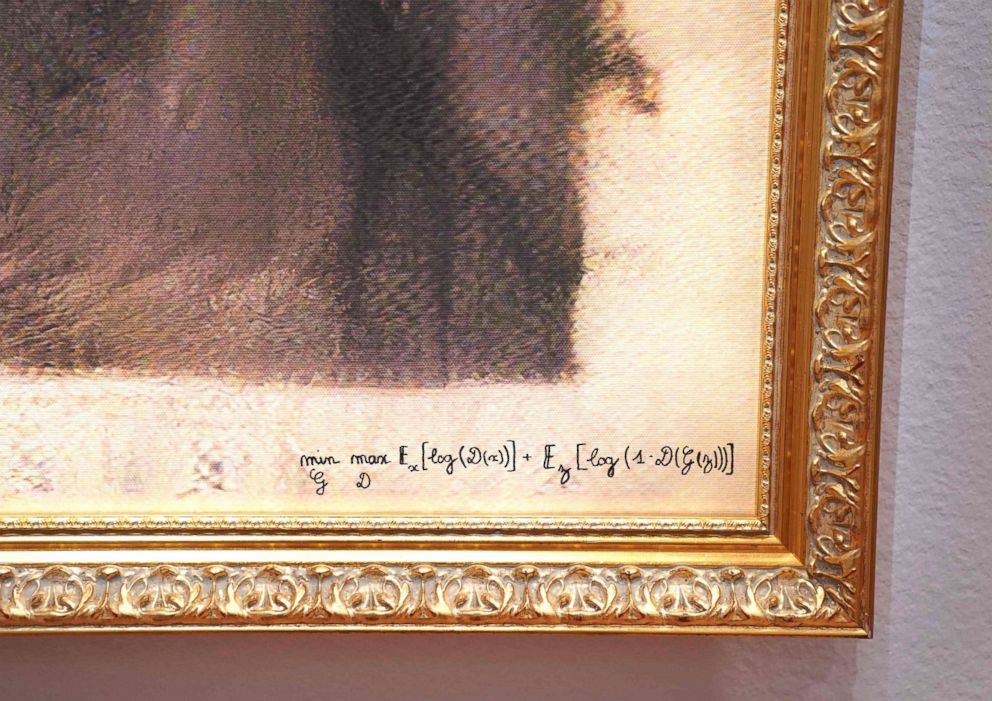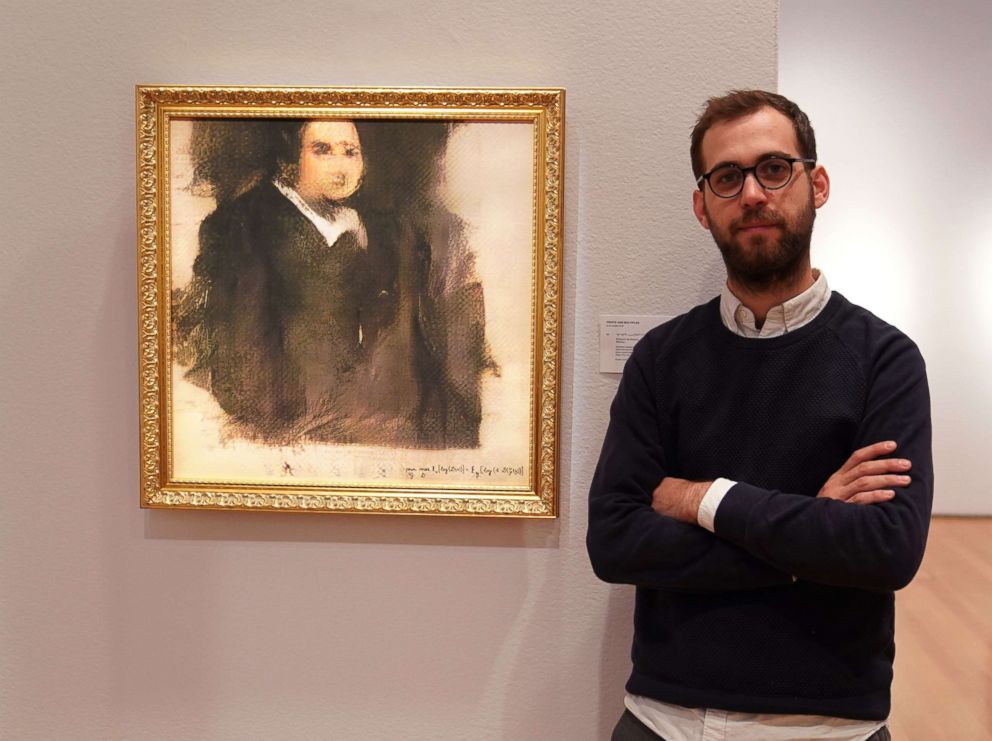Christie's auctions 1st piece of art created by artificial intelligence
New York is conducting the auction for the computer-printed portrait on Tuesday.
It took 15,000 paintings and more than eight centuries to produce the Portrait of Edmond Belamy, but the artist's signature is the big reveal: a mathematical algorithm.

Conceived by the Paris-based Obvious Collective, the resulting image -- a blurry face of a European man that evokes centuries past -- is the first piece of art generated by artificial intelligence sold by a major auction house.
Christie's New York is conducting the auction for the computer-printed portrait on Tuesday. The piece may fetch as much as $10,000, the company said in a statement. Edmond is a member of the 11-person Belamy family of AI-generated portraits.
The portraits are the brainchild of Obvious, a trio of lifelong friends who live and work together in an apartment near Gare du Nord. One of the three, Hugo Caselles-Dupré, discovered the Generative Adversarial Network class of algorithms while working on his Ph.D. in machine learning.
"The images they were creating were really amazing," his fellow collective member Pierre Fautrel told ABC News. “We are really fascinated by the power of algorithms. We begin to discuss, if you create art like this, is this art?"
The conversation, which originated with 25-year-olds lounging in their apartment on sofas, manifested in the Belamys.
"Can an algorithm be creative? We decided to make a discussion about this through our art and have an open discussion because we don’t have the answers," Fautrel said. "A lot of people everywhere in the world could have this interesting conversation."
They ran 15,000 portraits scanning the 14th to the 20th centuries through the algorithms. They focused on portraits, Fautrel said, because they wanted a form of art that "my mother and my little brother could understand."
The fictional Belamy family is a winking homage to the creator of the Generative Adversarial Network, Ian Goodfellow. In French, a rough translation of his last name is "Bel ami" or "Belamy."
The result, printed on canvas and hung in a gilt frame, could pass for a work by the Old Masters from a distance. Up close, the lack of texture and paint is obvious, and the image seems vaguely flat.

In February, a French collector, Nicolas Laugero-Lasserre, bought the portrait of the Belamy family patriarch, Le Comte de Belamy, aka The Count of Belamy, for €10,000 ($11,430), hence the guidance for this auction, which ends on Thursday.
Obvious caught the eye of Christie's Richard Lloyd, the international head of the Prints and Multiples Department, who then reached out to the collective, he said.
"I have always been interested in AI art and have been following the space for quite some time," Lloyd wrote in an email. "After speaking with them, we decided to include a piece from their La Famille de Belamy series [in this sale]."
Technology-enabled art is not unprecedented. Painter David Hockney embraced iPads and styluses for an extensive series of digital art.
As for whether AI is threatening to replace human artists, at least one, English painter Jonathan Huxley, is unconcerned.
"The threat of digital art has been around for 15 to 20 years. Real art is like prostitution: It's one of the oldest businesses in the world," Huxley said. "As people get saturated with the digital world, they'll want the blood, sweat, and tears in their living room. It's rarer and rarer so it will be worth more."




